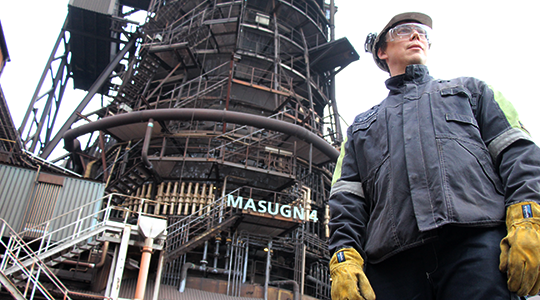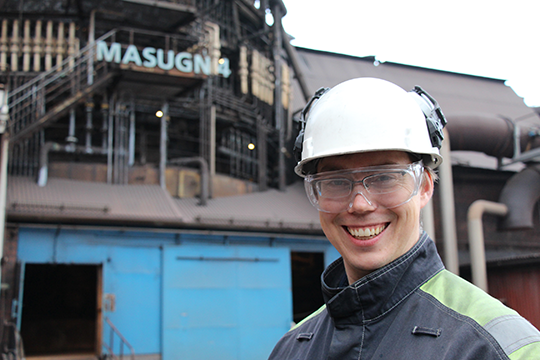New research project to reduce energy consumption and less eutrophication

SSAB in Oxelösund Sweden is working on a unique European research project that will lead to technical improvements in the blast furnace. SSAB, along with several other European steel companies, the metal research institute MEFOS and the European Betriebsforschungsinstitut (BFI), is researching how to reduce coke consumption in the blast furnace process, by monitoring and controlling the flow of alkalis in the blast furnace.
“A challenge presented by all blast furnaces is in addressing the problems with the sticking of alkaline substances that form large clumps inside the oven walls. When they become large enough to loosen, they fall into the melt, which causes a drop in temperature inside the furnace,” said David Lindström, process engineer at the blast furnaces in Oxelösund.
Even a temperature change is particularly bad for a blast furnace, as it can result in disturbances in the process, requiring a greater amount of energy to stabilize the temperature again. Expensive and not good for the blast furnace, which risks cold time, i.e. when the iron ceases to flow. This requires a re-start and a cleanup that cost millions, but also produces unnecessary carbon emissions. The work environment is also adversely affected by heavy work duties when the blast furnace is reset for operation.

SSAB will contribute by providing measurements from blast furnaces in Oxelösund, in which the coke is packed along the inside wall of the cavity. It is the gases in the blast furnace that can be read by the amount of alkaline substances in the furnace. New measuring equipment will be installed in the blast furnace in order to be able to obtain more precise measurement values.
“One hypothesis is that we will work with is the coating of the coke with waste substances or components that can bind to the alkaline substances. Then, a larger portion of the alkaline substances will be included with the waste. An additional benefit of this method, is that the need for the removal of sulfur at the steelworks can be reduced if we can already remove more of the sulfur in the blast furnace process,” says David Lindström.
Other steel companies in the project, such as Voestalpine, will also contribute by providing measurement values from their blast furnaces, which have different operating styles for thier furnaces. The project is estimated to take four years and is funded by the participating companies and a contribution from the EU.
To get a complete picture of the inflow and outflow of alkaline substances in the blast furnace, and to evaluate the tests, equipment that analyzes the furnace gases will be assembled. With the measurement of alkaline substances in the furnace gases, the levels of ammonia will also be measured. Ammonia in the furnace gases, then converts to ammonium when it comes in contact with the cooling water.
We leverage this in our environmental work, when we look at how process changes affect the ammonium content in the water. The measurement facilitates our actions for reducing ammonia emissions, the substance is not directly hazardous to humans, but can cause eutrophication in the sea and water. “There is already slight eutrophication that is manifest in increased algal blooms and is mainly due to to increased emissions from farms,” says David Lindström.